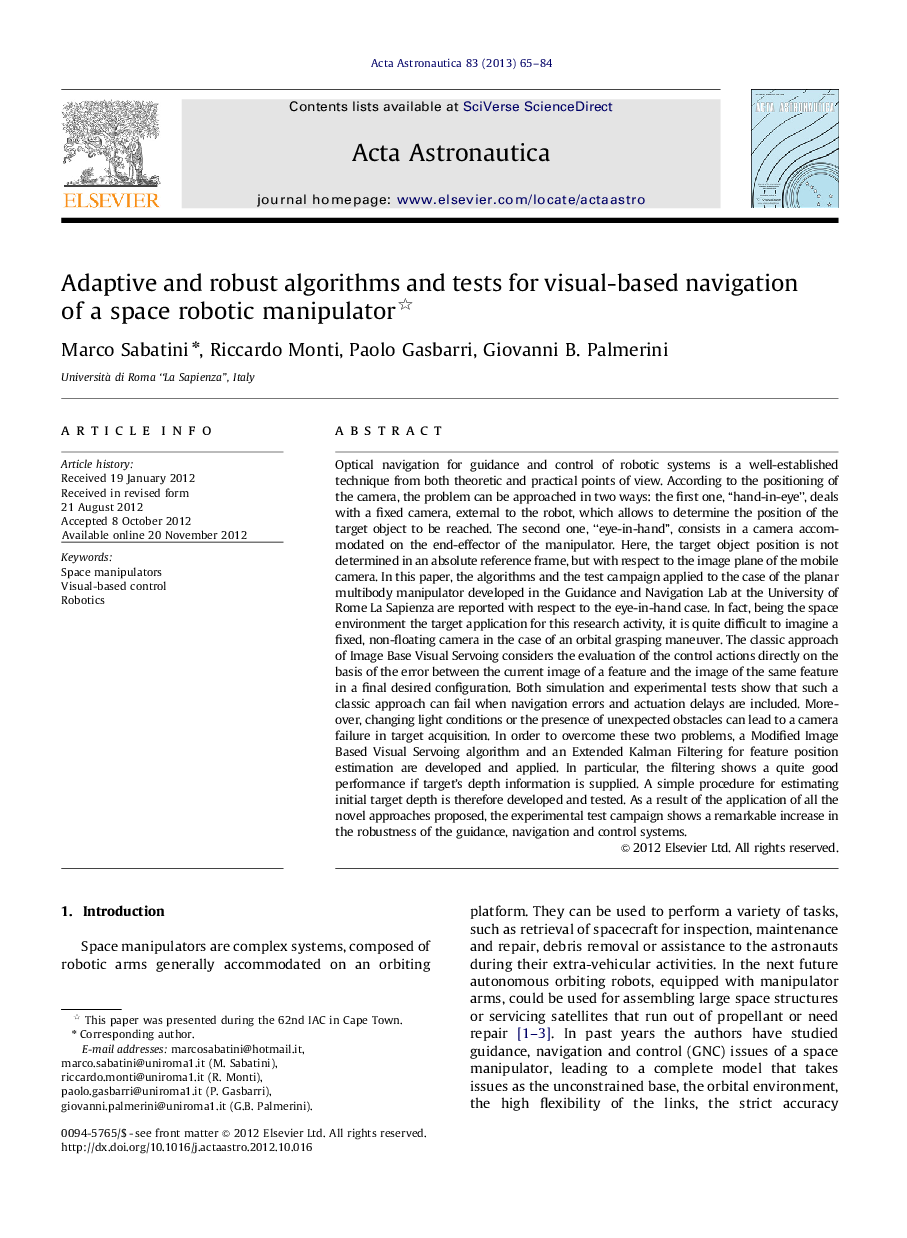| Article ID | Journal | Published Year | Pages | File Type |
|---|---|---|---|---|
| 1715091 | Acta Astronautica | 2013 | 20 Pages |
Optical navigation for guidance and control of robotic systems is a well-established technique from both theoretic and practical points of view. According to the positioning of the camera, the problem can be approached in two ways: the first one, “hand-in-eye”, deals with a fixed camera, external to the robot, which allows to determine the position of the target object to be reached. The second one, “eye-in-hand”, consists in a camera accommodated on the end-effector of the manipulator. Here, the target object position is not determined in an absolute reference frame, but with respect to the image plane of the mobile camera. In this paper, the algorithms and the test campaign applied to the case of the planar multibody manipulator developed in the Guidance and Navigation Lab at the University of Rome La Sapienza are reported with respect to the eye-in-hand case. In fact, being the space environment the target application for this research activity, it is quite difficult to imagine a fixed, non-floating camera in the case of an orbital grasping maneuver. The classic approach of Image Base Visual Servoing considers the evaluation of the control actions directly on the basis of the error between the current image of a feature and the image of the same feature in a final desired configuration. Both simulation and experimental tests show that such a classic approach can fail when navigation errors and actuation delays are included. Moreover, changing light conditions or the presence of unexpected obstacles can lead to a camera failure in target acquisition. In order to overcome these two problems, a Modified Image Based Visual Servoing algorithm and an Extended Kalman Filtering for feature position estimation are developed and applied. In particular, the filtering shows a quite good performance if target's depth information is supplied. A simple procedure for estimating initial target depth is therefore developed and tested. As a result of the application of all the novel approaches proposed, the experimental test campaign shows a remarkable increase in the robustness of the guidance, navigation and control systems.
► Proximity space operations could benefit from visual based techniques. ► The traditional control laws by means of a frictionless test-bed is verified. ► A modified version of control laws has been proposed and tested. ► A simple camera calibration algorithm is described and tested. ► Approximate depth estimation algorithms are described and tested.
